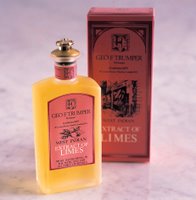In the movie Bull Durham, one of the main characters states that “the world is not made for those of us cursed with self-awareness.” Wet shaving is just the opposite. Wet shaving is suited for the man who wants to elevate his everyday life above the pedestrian. It adds pleasure to the day’s routine, provides a pensive time for the thinking man, and results in a much closer shave.
First let me define wet shaving for the unwashed. Wet shaving is using a shaving brush, shaving soap and hot water to properly lather the face for shaving. It takes more time than the alternative shaving methods, but the results are a closer shave with less skin irritation and a more pleasurable experience.
I first became aware of wet shaving in 1985 when I attended mountaineering and rappelling school on Cheju-Do Island. I was an army sergeant at the time assigned to the Joint Security Area on the Korean DMZ. The school was a junket of sorts, a reward for good job performance.
Multiple courses were going on at the same time, and students from different courses shared the same sleeping barracks. Sharing our barracks were a bunch of Brits who seemed to be undergoing a more serious course than ours. For the most part they kept to themselves. They looked fit, with a bit of a roughish air, but they were disciplined, not unruly. What I remember most about them was that they had these beautiful wet packs (shaving kits) which seemed in stark contrast to the rest of their appearance and demeanor.

Their use of a shaving brush, and the lathering up of the soap with hot water got my attention. It struck me as an elegant solution to a daily chore. I remember it also made me feel dissatisfied with my can of foam and throw away razor.
Years later my wife gave me gave me wet shaving gear for my birthday. Since I was new to wet shaving, she gave me shaving soap from two companies (Geo F. Trumper and D.R. Harris) so I could decide what I liked better. For the actual shaving gear, she gave me an
Edwin Jagger set (similar to the set pictured at the start of this post). Over time, she gave me additional gear (for Christmas or birthdays) so that I now own my own a complete travel set of Trumpers gear.
At this point I should say that wet shaving gear can be expensive (Best badger hair brushes can be pricey.) For many that’s part of its allure. It’s both snobbish and traditional. Some of the companies supplying the gear have been around for over 100 years and hold Royal Warrants. New comers to the practice will find a wide variety of products available.
For me the main appeal is that what used to be a tiresome delay in my morning, is now a pleasure. For the ten minutes it takes me to wet shave, I contemplate my objectives for the day as I enjoy the tactile sensation of the warm foam and smell of the soap. I also enjoy the feeling that I know something the great majority of men don’t know. Vanity also comes into play. The result is a much closer shave than that possible by using canned foam. And let us not forget, that when other men see your shaving gear at the gym, the invariable response is “Is that your gear? Coool…”
As for the actual mechanics of wet shaving, the secret to a good wet shave are simple. One, use plenty of hot water; and two, let the soap and razor do the work. Don’t press down with razor like you do with foam from a can. (In this regard it’s like golf where you let the club do the work.)
The shaving soap can be purchased in both hard soap (in a wooden bowl), or in cream (either in a tub or travel tube). A wooden bowl of hard soap can last a long time if you’re frugal minded. The cream is more expensive as you go through your supply much faster. Both types of soap are available in a variety of odor types.
There are various methods of shaving, and I won’t cover them here. It suffices to say that the shaver decides what method is best for him. Mine is simply three passes for reduction: One with the grain of the beard (down). The second pass is sideways, from the outside of the face (ears) towards the center (mouth). The last pass is against the grain (up). I lather fully for each pass.
After reduction I put on skin food. Skin food helps seal and protect your skin after the shave. After sampling different products, I finally settled on Trumper’s Extract of Limes Skin Food. I also do any finishing required using the skin food to elevate low level bristle in the fat of the cheeks or other difficult areas.
Finally on Cologne. If it’s a normal business day, I put on Trumper’s West Indian Extract of Limes Cologne which is very subtle. If I’m going out on a date with my wife, or a social occasion, then I use D.R. Harris’s Arlington Cologne which is more “declarative.” Both are citrus based.

Geo F.
Trumper has been around since 1875 on Curzon Street in London, and has held Royal Warrants from various monarchs. Trumper’s is probably the single most recognized name in wet shaving and is considered by many to be the apex.
On the business of
Royal Warrants; Royal Warrants are given to companies (tradesmen) who sell goods or services for at least five years to the British Royal Family. All business is conducted on a strictly commercial basis. (No freebies for the Royals.) The warrant symbolizes an endorsement by the Royal that can be used by the company. The Royal receives no compensation for the warrant. Currently, three members of the Royal Family grant warrants; Her Royal Majesty the Queen, the Prince of Wales, and the Duke of Edinburgh. The Queen Mother, recently deceased, also granted warrants. The warrants from the Queen Mother will continue for five years past her death.
What does a Royal Warrant mean in American English? By plucking down thirty bucks for a tub of shaving cream you can skip the six-degrees-of-separation stuff and claim you have something directly in common with the Queen.

The second company I’ve mentioned is
D.R. Harris. D.R. Harris has been around since 1790 on St. James Street and like Trumpers has held numerous Royal Warrants. Its latest warrant was granted in 2002 by HRH Prince of Wales. It also has a colorful history as it is located in the “heart of the Gentleman’s Clubland” in London. Part of their product line used to be eye drops and Pick-Me-Up elixir to perk up a Gentleman after a hard night of frolic in the clubs. The eye drops have been discontinued, but the Pick-Me-Up is still available. D.R. Harris proudly boasts to having supplied the needs of customers ranging from “Ambassadors and Statesmen, Field Marshals and Admirals, to rakes and dandies – all those who appreciate quality and distinction.”
While the evolution of internet commerce is a welcomed benefit to those of us not living in London, there are three basic problems you will face getting started. One is that a website cannot give you the ability to actually smell or sample the product prior to buying. The best you can do is to carefully read the description of the product before ordering. The second issue is that for some reason Brit’s haven’t really figured out how to design effective websites. You will find both the Trumper and D.R. Harris sites cumbersome. Finally, you will be left the task of teaching yourself, by trail an error, your own best practices for wet shaving.
If you’re fortunate enough to live in the Austin Texas area, there is a specialty shop called
Enchante that carries both Trumper and D.R. Harris. It’s owned by Charles & Jean Roberts, and if you set up an appointment, Charles will help you get started. He also does wet shaving clinics for new practitioners of the art. Charles is very enthusiastic about converting the unwashed heathens of the world to saved souls who practice wet shaving. In fact he practically militant about it. His mode of operandi can be best described as highly energetic and earnest. (Oh and a word of caution, stay off politics.)
A complementary word on Charles’ store…In January 2004 I was shopping in New York City during a cold front and I stepped into a store specializing in men’s shaving gear to duck out of the cold. I forget the name of the store, but it was across the street from the Brooks Brother’s store on Madison Avenue. I remember noticing the New York Store’s selection was not as intensive as Charles’ store in Austin. In short, you may find a pilgrimage to Austin worthwhile.
The only alternative I’m aware of to an Austin shaving clinic is to set an appointment and travel to Trumper’s barbershop in London which could be considerably more expensive and time consuming.
Finally, there are numerous providers of wet shaving stuff. I did not mean to suggest that you should limit your search to Trumper’s or D.R. Harris. I meant only to show the example of my own travel and preferences in this area. Additional merchants include
Truefitt & Hill (which also holds a Royal Warrant), Coate’s,
Taylor of Bond Street, and Simpsons Brushes, just to name a few. Some of the providers can be purchased at department stores like Nordstrom. And then there a number of companies that have sprung up across the U.S. like “
The Art of Shaving.”
If by writing this I have saved one poor soul from the boorish practice of extracting foam from a can, or worse, electric shaving, then my work here is done.
John P.
































